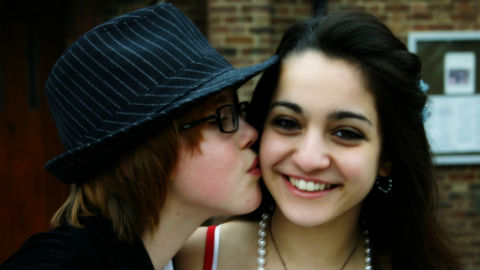Are Lesbian Marriages Doomed for Failure?

“Lesbian break-ups can apparently be bitchier than gay men’s.” wrote columnist Giles Hattersley in the Sunday Times this weekend as he speculated his way through a piece on why 62% of civil union dissolutions (i.e. divorces) in the UK are between women despite the fact that lesbian relationships only represent 44% of civil partnerships in that country.
Hattersley gives several reasons for why married lesbians can’t seem to stay together (which I will outline below) but ignores the obvious explanations – divorces are almost always instigated by women and people who have already been married once are more likely to divorce in the future.
In the UK, same sex couples can form legally recognized relationships, akin to marriages, and have had this right since the Civil Partnership Act came into effect in December 2005. Just like marriages these unions can be dissolved via a legal process similar to a divorce (which in the UK requires someone to be at fault).
The most recent evidence from the UK Office of National Statistics finds that homosexual couples that joined in 2005 were significantly less likely to have filed for dissolution four years later than heterosexual couples were to have filed for divorce: 2.5% compared to 5.5%.
As Hattersley points out, however, male couples were much less likely to dissolve their relationship than were female couples: By the end of 2010, 1.6 % of male civil partnerships had ended in dissolution compared to 3.3 % of female partnerships.
This is not to say that women in homosexual partnerships are more likely to experience dissolution than are women in heterosexual partnerships, however, but Hattersley ignores this when he comes up with his list to reasons why lesbian women dissolve civil unions more frequently than gay men.
His list of reasons include:
1. Women are impulsive when it comes to commitment and without having men to temper that impulsivity lesbians rush into relationships too quickly. (He writes “Could it be that the cliché of a woman’s thirst for commitment is more dangerous when directed at another woman?)
2. Men are more pragmatic when it comes to relationships whereas women are overly emotional and tend to react to small things men would ignore.
3. Lesbian women have higher standards for their partner’s behavior than do heterosexual women who are more willing to accept that boys will be boys (specifically when they unfaithful).
4. Women in relationships “often fuse themselves too closely together,” leaving one or the other feeling the need to be out just so they feel like themselves again.
He also says something about women not being able to think straight with their biological clocks pounding in their ears, but to be honest with you I had no idea what the argument was.
Despite all the thought that has gone into why two women married together are doomed for failure he ignored the most obvious explanations.
For example, women are far more likely to instigate divorce than are men.
Over 2/3 of divorce proceedings in the US are brought forward by wives and, in one study at least, divorced women were three times more likely to agree with the statement “I wanted the marriage to end but my husband/wife did not” than were divorced men.
If women are more likely to want to end a marriage then it shouldn’t surprise anyone that marriages with at least one woman in them (regardless of sexual orientation) are more likely to end in divorce.
This argument does not depend on women being emotional basket cases. At least one study has found that the differential filing rates between men and women is very closely tied to disputes over property and child custody.
Women who want out of their heterosexual marriages file for divorce much sooner than do men who want out of their heterosexual marriages.
Same sex unions (and dissolutions) have only been legally permitted for a very short period of time. If women are more likely than men to dissolve their relationships quickly (and statistically that appears to be true) then the observation that lesbian women dissolve their relationships at higher rates than gay men isn’t that surprising given that we only have a few years of data available at this moment.
Finally, people who have been divorced in the past are far more likely to divorce in the future.
In the UK in 2010, 19% of male civil unions were between a previously single man and a previously married man while 27% of female civil unions were between a previously single woman and a previously married women.
If lesbian women are more likely to have been in a heterosexual relationship in the past that ended in divorce (which appears to be true) than are gay men, then there is nothing surprising about their higher divorce rates in that gender group.
I suspect that if Hattersley read this he would smile smugly, shake his head and think: “Silly little ninny.”
References:
Allen, Douglas and Margaret Bringig (2000). ““These boots are made for walking”: Why most divorce filers are women.” American Law and Economics Review Vol. 2 (1).
Office of National Statistics (7 July 2011). “Civil Partnerships in the UK, 2010.”
Ross, Helen; Karen Gask; and Ann Berrington (Autume 2011). “Civil Partnerships Five Years On.” Office for National Statistics.
“Giles Hattersley investigates the rise of the pink divorce.” The Sunday Times, 1 April 2012. (No public link available right now, I will keep checking)





